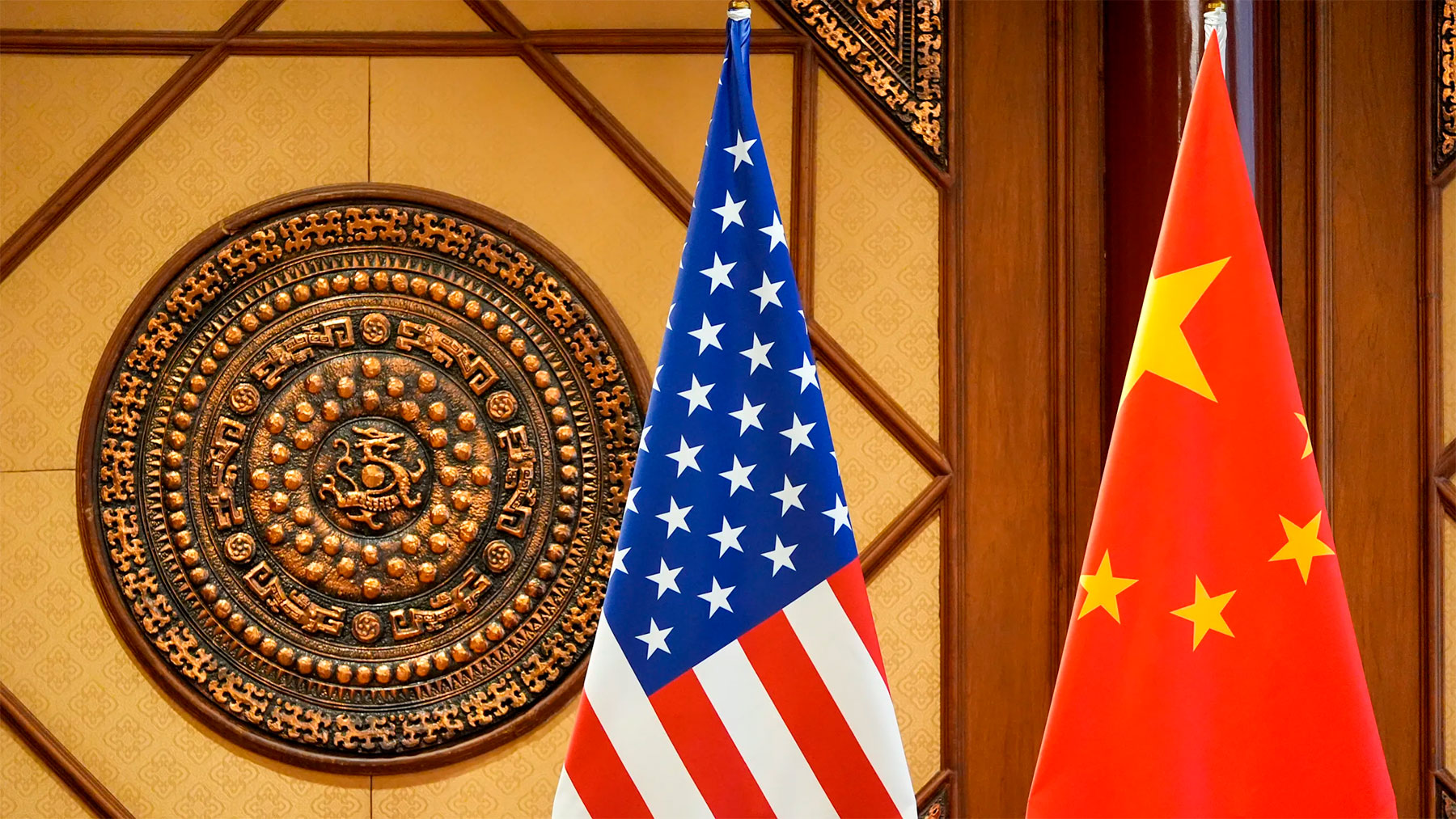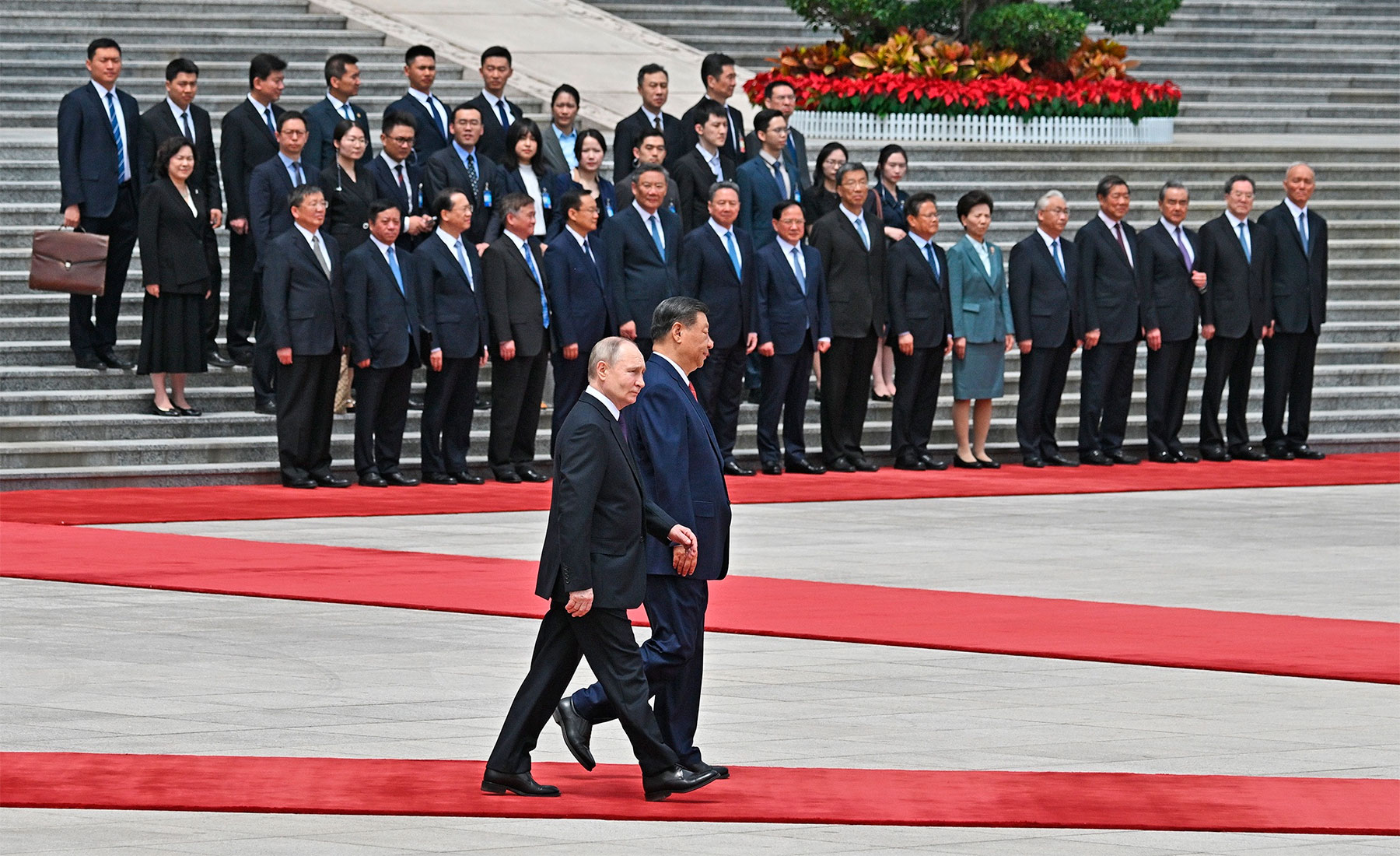The current state of international relations demonstrates a steady tendency towards the multiplication of deterrence tasks among the three key global centres of military power—the United States, China and Russia. Each of them has an increasing number of opponents. Moreover, the increase in their number, as well as the degree of confrontation, has its roots in the relatively favourable situation of the 1990s and early 2000s, when Washington, Beijing, and Moscow enjoyed much more favourable external conditions: the number of rivals was negligible, while the density of partnerships was unprecedented.
All three powers, for various reasons, have found themselves in a situation where the tasks of containment, expanding confrontation, and the need to resolve security issues involve using force or the threat of its use. Past economic ties have not held back political contradictions. Apparently, we are only at the beginning of an exacerbation. After all, the real fight between the two key rivals—the USA and China—is yet to come. One can argue for a long time about what is the root cause of the increase in deterrence—mistakes of diplomats or objective factors giving rise to rivalry. The result is what’s important. The three largest military-political centres simultaneously faced deteriorating foreign policy conditions, whereas twenty years ago all three were in a much more peaceful environment. The fate of the future world order still depends on the ability of the “troika” to control rivalry and on the results of such rivalry.
Minimising the number of one’s enemies while multiplying one’s number of friends is a basic principle of diplomacy that has existed for centuries. The simplicity of the principle itself is more than compensated by the complexity of its practical implementation. In international relations, the price of friendship may be too high, limiting freedom of manoeuvre, while open hostility brings existing contradictions to the limit, radically resolving them in favour of one side or another.
Advising a diplomat to expand alliances and limit confrontations is like advising a stock market player to buy shares when they are cheap and sell when they are expensive. It is obvious that minimising the number of rivals allows you to save resources, concentrate them on the tasks of internal development, and not be torn on several fronts. However, it is also obvious that competition may be preferable to concessions to the demands of the opposite side, especially when it comes to issues of principle. The situation is further complicated by the fact that countries can compete in some areas while remaining partners in others. Then adjusting the balance of cooperation and competition becomes even more difficult. The transition of international relations to extreme forms of rivalry is quite possible; history is full of such episodes. In such situations, the key task becomes not so much preserving the remnants of friendship as a preparation for the upcoming war, which the parties may consider inevitable, waging war by proxies, and entering into confrontation at a convenient moment. The bottom line is that the one who finds the optimal balance of allies and rivals will be able to conserve resources, and if confrontation is inevitable, will be able to withstand it, emerge victorious, and make use of the results of victory.
The current state of international relations demonstrates a steady tendency towards the multiplication of deterrence tasks among the three key global centres of military power—the United States, China and Russia. Each of them has an increasing number of opponents. Moreover, the increase in their number, as well as the degree of confrontation, has its roots in the relatively favourable situation of the 1990s and early 2000s, when Washington, Beijing, and Moscow enjoyed much more favourable external conditions: the number of rivals was negligible, while the density of partnerships was unprecedented.
At the turn of the 20th and 21st centuries, the United States had virtually no rivals among the major powers. Relations with Russia were defined by a network of arms control treaties. It was difficult to call them cloudless, but even a semblance of confrontation from the Cold War era was very difficult to imagine. The key security problem for the United States was radical Islamism in its terrorist guise; Russia actively helped the United States in its fight against international terrorism, and China simply did not interfere. North Korea and Iran formed an “axis of evil” whose nuclear ambitions Washington tried to restrain with sanctions. Moscow and Beijing, if they did not help the Americans, then at least tried to find the optimal formula for solving nuclear problems via the UN Security Council.
Some twenty years later, the situation for the United States has changed quite radically. China is perceived as a powerful and long-term rival in all senses. We are talking about a military-political, economic, and even ideological rivalry. It is difficult to compare China with the USSR during the Cold War. But in all three of these dimensions, it represents an alternative to American politics. Although the United States would like to keep the rivalry with China under control, especially given the close ties between the two economies, the task of containing China will become a priority for decades to come. Russia has turned from a weakened and extremely cautious partner into a tough and uncompromising adversary, as its interests in the post-Soviet space are being infringed upon, and its economy and military-industrial complex are being restored. Enmity with it requires a manifold increase in investments in support of Ukraine, an increased presence in Europe, and the modernisation of nuclear potential, taking into account the advance appearance of new missile systems in Moscow. The arms control regime has been torn to shreds. Washington is trying to control the escalation but could find itself at war with Russia, with the unlikely but growing risk of a nuclear exchange. The DPRK has both nuclear weapons and missiles capable of launching them. It would now be more difficult to crush North Korea. US enmity towards Russia and its rivalry with China has provided an opportunity for Pyongyang to emerge from isolation. The same goes for Iran. The aggravation of US relations with Russia and China plays into Tehran’s hands in overcoming isolation and the blockade. The “axis of evil” that the United States so actively fought against has only strengthened, and in interaction with Russia and partly China, it will continue to strengthen. Russia and China themselves are also getting closer. A military alliance is a long way off. Moscow and Beijing are not striving for it. But their interaction is now closer, and the United States will no longer be able to use Russia to balance China.
Chinese diplomacy has been building an extremely cautious foreign policy since the late 1970s. Beijing has most consistently adhered to the principle of minimizing adversaries and maximizing friends. In many ways, China has achieved its goal, having managed to create favourable foreign policy conditions for enormous economic growth, increasing the well-being of citizens and modernising the army. The problem is that such PRC growth, even taking into account the lack of expressed ambitions, has caused growing concern in the United States. As a result, Beijing was faced with the fact that Washington decided to act proactively, containing China while the possibilities for such containment remained in the arsenal of American foreign policy. Perhaps the PRC leadership would prefer to continue to enjoy the benefits of global peace and live amid conditions of minimal competition. But the results of successful modernisation are now becoming an issue that the United States considers a security challenge. This means China will have to live in response to the American policy of containment, which includes the building of anti-Chinese alliances. Here, American diplomacy will try to place its bets, including in India. However, India is too large and powerful a country to play a passive role. China, in turn, is building a special relationship with the United States' European NATO allies. Here Beijing could take into account the Russian experience of “special” relations with the European Union.
Finally, Russia at the turn of the century had practically no serious rivals. The country was seriously weakened by the fall of the Soviet Union and controversial reforms. Political relations with the West have gradually deteriorated since the late 1990s, but still haven’t reached a critical level, having been compensated with a high level of economic cooperation. In Asia, relations with US allies Japan and South Korea were also especially cordial without the burdens that remained in matters of European security. Today, almost the entire collective West is fighting against a strengthened Russia in Ukraine, supplying Kiev with weapons and ammunition, and providing Ukraine with finances, intelligence, military specialists, etc. Economic relations have been undermined for a long time by sanctions. Tokyo and especially Seoul have taken a more cautious position, but are still forced to follow the American line.
The bottom line is that all three powers, for various reasons, have found themselves in a situation where the tasks of containment, expanding confrontation, and the need to resolve security issues involve using force or the threat of its use. Past economic ties have not held back political contradictions. Apparently, we are only at the beginning of an exacerbation. After all, the real fight between the two key rivals—the USA and China—is yet to come. One can argue for a long time about what is the root cause of the increase in deterrence—mistakes of diplomats or objective factors giving rise to rivalry. The result is what’s important. The three largest military-political centres simultaneously faced deteriorating foreign policy conditions, whereas twenty years ago all three were in a much more peaceful environment. The fate of the future world order still depends on the ability of the ‘troika’ to control rivalry and on the results of such rivalry.
First published in the Valdai Discussion Club.






